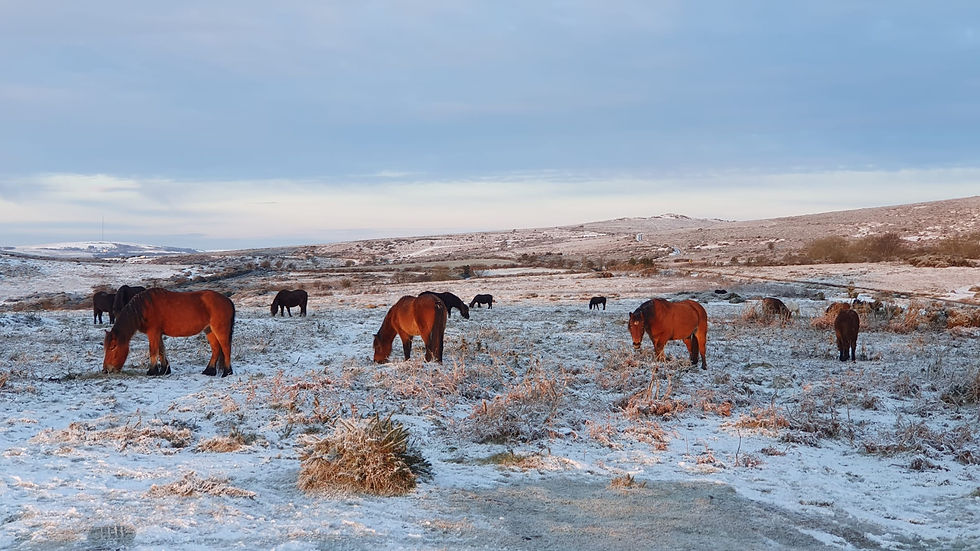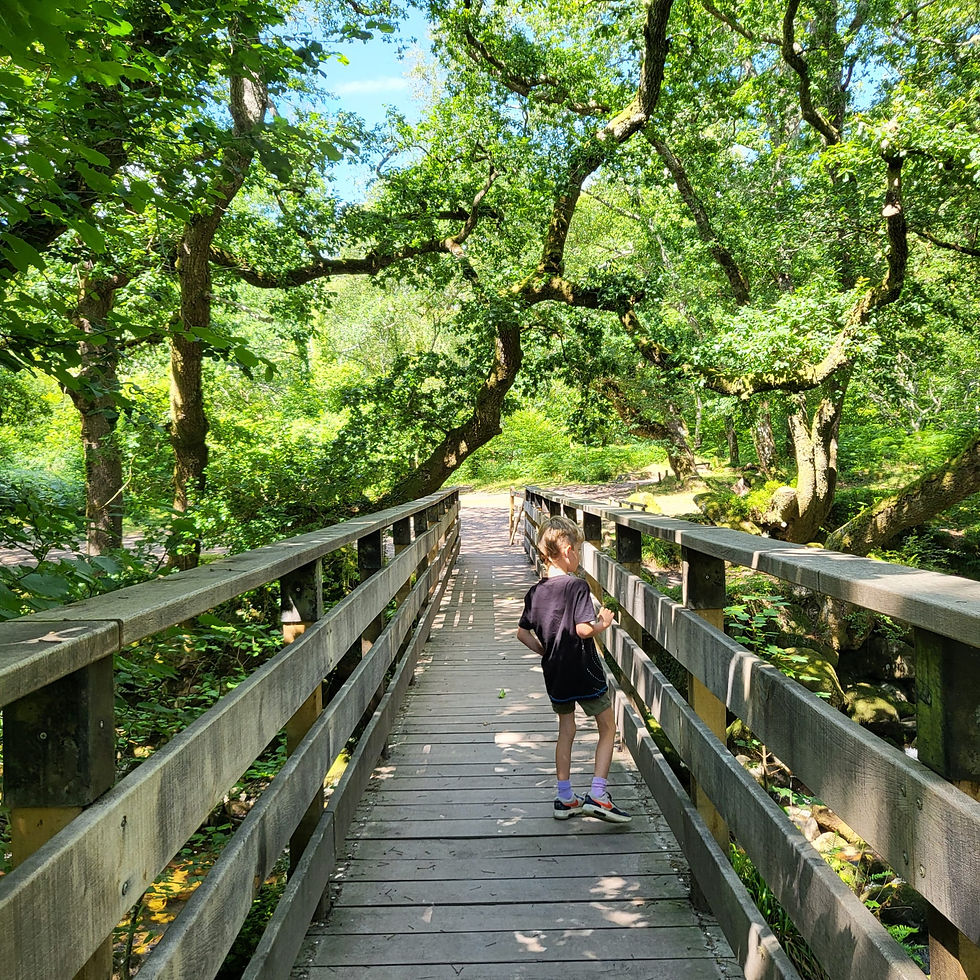Wildlife Wonders on Dartmoor
- Jack Dicker
- Aug 19
- 2 min read

Our land is alive with wildlife wonders on Dartmoor, from the open moorland to the wooded valleys. Each area offers a different home for animals, birds, and insects, creating a landscape that is as much about movement and sound as it is about scenery. Walking across the moor, you might see skylarks rising above the grass, buzzards circling overhead, or ponies grazing together on the slopes. These creatures are woven into the identity of the moor, and spotting them often becomes the highlight of a family walk. Yet with this privilege comes responsibility. Disturbing wildlife can have lasting effects, particularly during sensitive times such as lambing season or when ground-nesting birds are raising their young. The best way to enjoy Dartmoor’s wildlife is quietly, respectfully, and from a distance. For wider guidance on this, see Respecting Dartmoor.
Beyond the more obvious sights, Dartmoor hides a variety of less visible animals. In summer, adders bask on sunny banks, often among rocks or in heather. They are naturally shy, but curious dogs can easily disturb them, so keeping your pet close helps avoid any risk. Ticks are another small but significant part of Dartmoor life. They thrive in grassy areas during the warmer months, and while they are easy to overlook, a quick check after your walk helps prevent problems. Foxes, badgers, and deer may be harder to spot, but traces of their presence such as tracks or calls at dusk add to the sense of walking through a living, breathing landscape. Learning what to expect not only helps families explore with confidence but also keeps both people and wildlife safe. If you want to explore the plants and habitats that support these creatures, take a look at Trees, Plants and Fungi on Dartmoor.
Among Dartmoor’s best-loved residents are the ponies. They have grazed the moor for centuries, shaping the balance of grasses, shrubs, and open spaces we see today. They may look friendly, but they are not tame, and feeding them can cause illness or lead to unsafe behaviour. Watching them from a respectful distance allows families to appreciate their beauty without harm. Dogs should also be kept under control around them, as even calm ponies can be startled, sometimes with dangerous consequences. This same respect applies to sheep and cattle, which are often grazing on the open moor. Their role is just as important in maintaining Dartmoor’s character, and they should be treated with equal care.
Dartmoor’s wildlife adds richness to every season. Spring brings nesting birds and the first sightings of foals, summer hums with insect life, autumn is marked by rutting deer and the call of migrating birds, and winter strips the moor back to a quiet stage where hardy species endure. For families, these changing rhythms offer endless opportunities to connect with nature. The Dartmoor National Park wildlife guide is an excellent resource for those who want to learn more about the animals they may encounter. To put these seasonal shifts in context, you can also read our blog on Seasons on Dartmoor. By being mindful and informed, we protect the creatures that make Dartmoor special and ensure that future generations can enjoy walks filled with the same sense of discovery



Comments